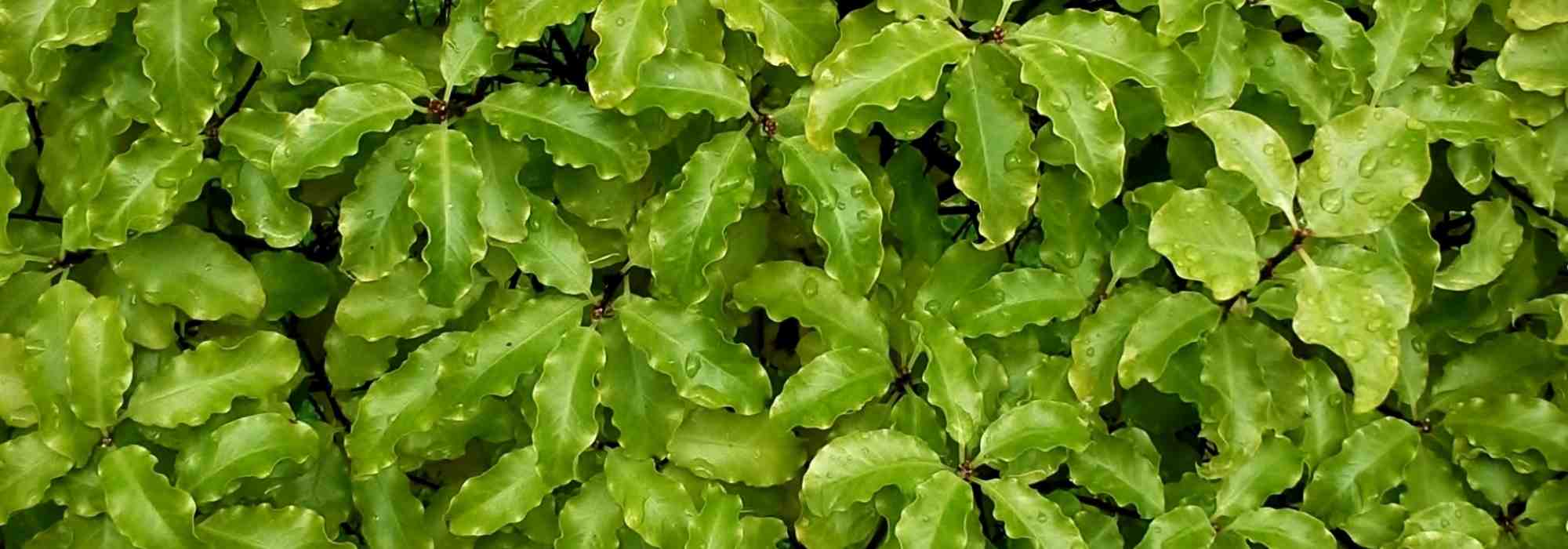
How to choose your Pittosporum ?
Buying guide
Contents
Pittosporum is an evergreen bush, much appreciated for diversity of its plain or variegated foliage, and sweet scent of its small spring flowers, with notes of orange blossom, honey or vanilla. Preferring mild coastal climates, Pittosporum works wonders in borders, as a hedge, as topiary because it tolerates pruning very well or in a pot. There are over 200 species including Pittosporum tenuifolium which declinates into many particularly decorative varieties, as well as Pittosporum tobira. Discover our advice to choose your bush according to your wishes and needs.
Depending on foliage colour and shape
Pittosporum offers a beautiful diversity of evergreen foliage whose colour varies according to species and variety. It ranges from green to purple, including grey-green variegated tones, sometimes speckled or even golden. Leaf shape can also vary. In Pittosporum tenuifolium, the fine dark branches particularly set off variegated and light foliage.
Pittosporums with green or coloured foliage
Unicoloured foliage is widespread, whether in green or purple tones :
- The Pittosporum tobira forms a bush bearing elongated leaves, 5 cm long, thick and glossy dark green. A dwarf form exists, Pittosporum tobira ‘Nanum’, which does not exceed 1 m in height ;
- The greyish branches of Pittosporum heterophyllum bear leaves shaded from pale green to bright green. They are elongate, leathery, glossy and can measure 3 to 8 cm in length by 1.5 to 2.5 cm in width. Overall, foliage is more elegant than that of its Japanese counterpart Pittosporum tobira ;
- Pittosporum daphniphylloides has large, evergreen, leathery leaves that are glossy and rather glaucous ;
- Pittosporum tenuifolium bears small, very bright green undulate leaves, identifiable by their cream-white vein. Some varieties also offer green foliage: ‘Golf Ball’ with small ovate leaves of a lovely olive-green hue and ‘Emerald Dome’ with small leaves similar to the former ;
- The Pittosporum illicioides var. angustifolia has elegant, fine, silky green foliage with an exotic appearance ;
- Finally, a particularly remarkable variety is Pittosporum tenuifolium ‘Tom Thumb’ with very dark purple foliage and metallic reflections.
Pittosporums with variegated foliage
Pittosporum tenuifolium comes in various cultivars with variegated or speckled foliage, shaded greens or ranging from white to golden through cream, with silvery highlights and sometimes a hint of pink in cold weather. Leaves are relatively small, not exceeding 3 to 4 cm in length by 1.5 to 2 cm in width. They are more or less undulate and are inserted on fine black branches. They are all very ornamental year-round and particularly luminous. Finally, Pittosporum tobira is also available in a variegated form.
- Pittosporum tenuifolium ‘Variegatum’ : Its soft green leaves are marbled with cream and slightly undulate ;
- Pittosporum tenuifolium ‘Elisabeth’ : It is distinguished by undulate foliage in a beautiful almond-green shade with silvery reflections and variegated with cream. Its small leaves change colour and turn pink in cold weather ;
- Pittosporum tenuifolium ‘Irene Patterson’ : This variety offers almond-green foliage flecked with cream and can take slightly pink tones in winter ;
- Pittosporum tenuifolium ‘Abbotsbury Gold’ : It offers foliage variegated with deep green and light green leaning towards yellow ;
- Pittosporum tenuifolium ‘Golden Ball’ : Its small leaves, initially tinged with yellow and slightly marginate with green, become acid green at ripeness ;
- Pittosporum tenuifolium ‘Silver Ball’ : Its small leaves are a beautiful silvery green and marginate with white ;
- Pittosporum tobira ‘Variegatum’ : It displays the leathery foliage typical of the species, the originality being an olive-green shade marginate with white in a very irregular way.
By flower colour
Pittosporums offer a compound flowering of charming tubular flowers in white, yellow, red or even dark purple, depending on variety. These small flowers appear in spring, generally around May/June, and are accompanied by sweet scents of orange blossom, vanilla or honey. Flowering is followed by fruiting, with a few spherical capsule fruits green then black that split at ripeness to release seeds.
White-flowered Pittosporums
In May, Pittosporum tobira, ‘Variegatum’ and ‘Nanum’ dress themselves in small 3 cm bells, white becoming buttery-yellow as they fade, arranged in terminal umbels. They diffuse a delightful, powerful scent reminiscent of orange blossom.
Yellow-flowered Pittosporums
Some Pittosporum species bear yellow, fragranced flowers in May/June, sometimes earlier or a little later depending on region:
- Pittosporum daphniphylloides : Flowering forms beautiful umbels 4 to 6 cm in diameter, composed of 3 to 7 small pale-yellow flowers, pleasantly scented;
- Pittosporum heterophyllum : It bears pale-yellow flowers 5 to 6 mm, grouped in umbels at tips of shoots or in axils of leaves. They diffuse a suave perfume reminiscent of orange blossom;
- Pittosporum illicioides var. angustifolia : Pale-yellow, scented tubular flowers are borne on long trailing peduncles.
Dark red-flowered Pittosporums
In May/June, Pittosporum tenuifolium and its varieties all produce dark red, almost black flowers a few millimetres in diameter. Exception is ‘Emerald Dome’, which does not flower. The flowers diffuse an intense honey scent, especially noticeable on summer nights. Note also that variety ‘Irène Patterson’ flowers sparingly.

Pittosporum tobira with bright small white flowers, Pittosporum heterophyllum bears yellow flowers and Pittosporum tenuifolium (photo Jean Jones – Flickr) has very dark purple flowers
Discover other Pittosporum
View all →Available in 0 sizes
Available in 1 sizes
Available in 1 sizes
Available in 2 sizes
Available in 2 sizes
Available in 1 sizes
Available in 3 sizes
Available in 2 sizes
Available in 1 sizes
Available in 2 sizes
Depending on exposure
Pittosporums prefer warm, sheltered sites, away from cold winds and generally in full sun. However, most species and varieties tolerate light shade. Pittosporum tobira and its cultivars tolerate partial shade well in Mediterranean regions. Pittosporum heterophyllum and Pittosporum daphniphylloides also cope well in shaded situations, sheltered from overly harsh sun.
Bear in mind that Pittosporums tolerate partial shade well in regions with dry summers; otherwise give them sun and they will be even more striking!
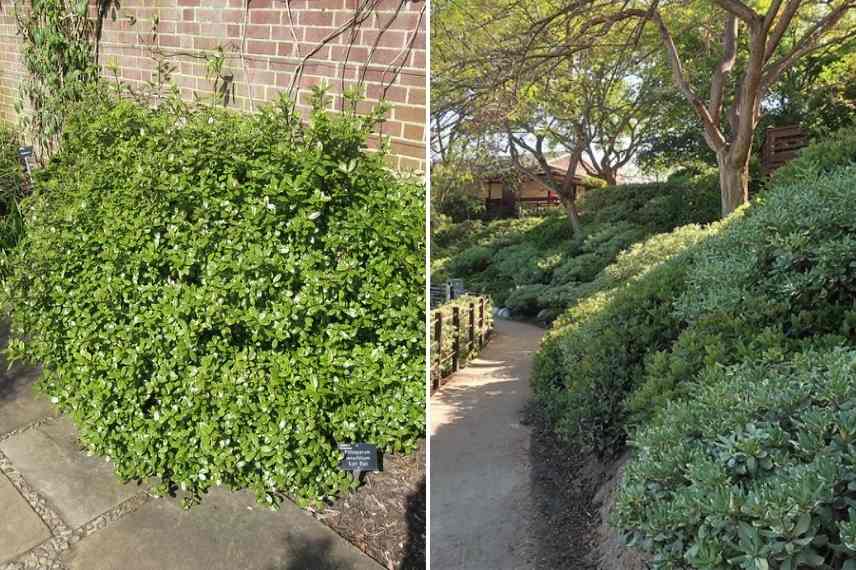
Pittosporum tenuifolium ‘Golf Ball’ in full sun on left (Photo: L. Enking), and Pittosporum tobira ‘Variegatum’ in partial shade on right (Photo: KM)
Depending on its use
Pittosporums offer a fine diversity of sizes, ranging from 80 cm to almost 3 m, and of habits, allowing use in many situations. Furthermore, some species or varieties do not have the same requirements in terms of soil, although in most cases they prefer dry or at least well-drained soil.
As a specimen
These are bushes that can easily stand alone, so naturally ornamental they are. Pittosporum daphniphylloides becomes, over years, a true small tree reaching 2.75 m in height with a 2 m spread. Sometimes even larger if happy. Pittosporum tenuifolium ‘Abbotsbury Gold’, by contrast, forms a handsome dense, rounded bush about 2.50 m high and 2 m wide.
As an informal hedge
Pittosporum tobira and ‘Variegatum’, P. heterophyllum, P. tenuifolium and ‘Emerald Dome’, ‘Elisabeth’, ‘Abbotsbury Gold’ and ‘Irene Patterson’ form large evergreen bushes with dense foliage and are valuable for creating attractive informal hedges by the sea.
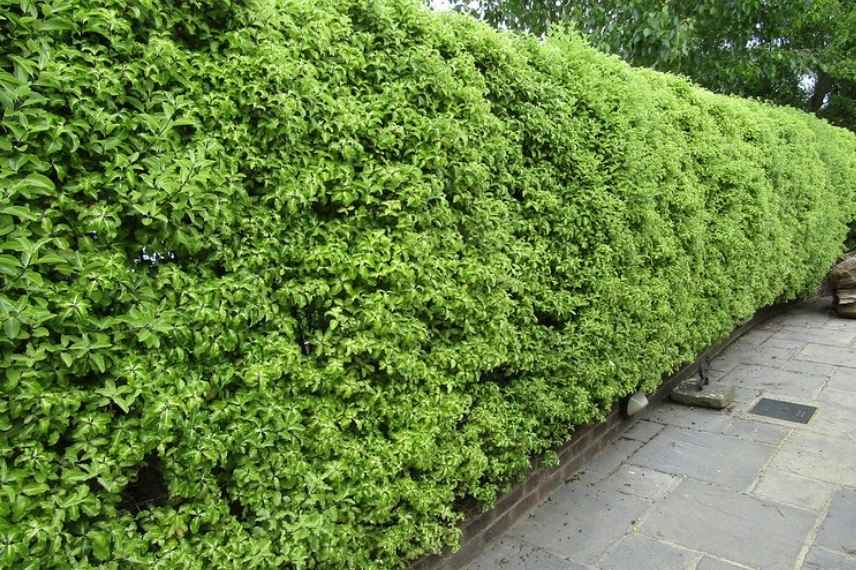
A hedge of Pittosporum tenuifolium (Photo: L. Enking)
In a mixed border
- For edging a border, favour compact small varieties such as ‘Tom Thumb’, P. tobira ‘Nanum’, ‘Golf Ball’, ‘Silver Ball’ and ‘Golden Ball’.
- For the back of a border, choose larger varieties such as ‘Emerald Dome’, P. illicioides var. angustifolia, P. daphniphylloides, P. heterophyllum and the P. tenuifolium (‘Abbotsbury Gold’, ‘Irene Patterson’) as well as P. tobira ‘Variegatum’
Note that Pittosporum illicioides var. angustifolia and daphniphyllum prefer well-drained soil that does not dry out too much in summer.
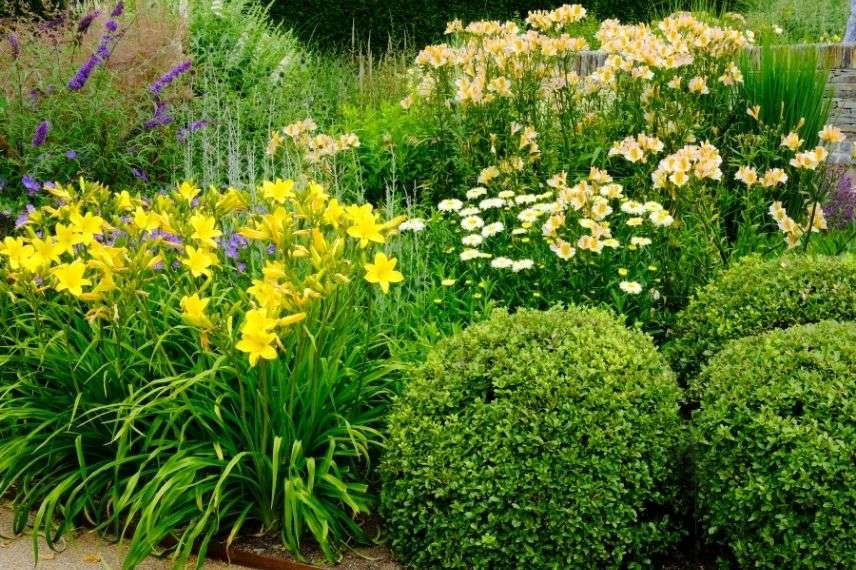
Example of a border with clipped Pittosporum balls, daylilies, alstroemerias, a Buddleia…
In a dry garden
Make abundant use of Pittosporum tenuifolium and its cultivars which are at ease in a dry garden: ‘Emerald Dome’, ‘Tom Thumb’, ‘Irène Patterson’, ‘Silver Ball’, ‘Golden Ball’ in particular.
In a large pot
Pittosporum tobira are perfect in containers. Variety ‘Nanum’, dwarf, very compact with slow growth is particularly well suited. Varieties ‘Tom Thumb’, ‘Golf Ball’, ‘Elisabeth’, ‘Abbotsbury Gold’, ‘Silver Ball’ and ‘Golden Ball’ are also very suitable.
Be careful: outside coastal areas you will need to bring potted Pittosporum indoors to a bright frost-free spot. Use a fairly large pot, ideally at least 60 cm deep, or an orangery-style container.
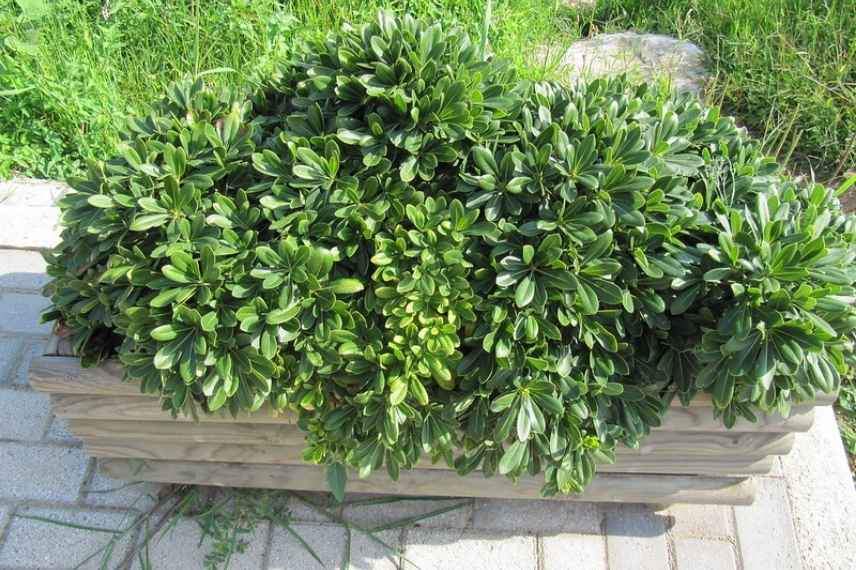
A Japanese Pittosporum will be happy in a sufficiently large container (Photo: L. Enking)
As topiary
Pittosporum tobira tolerates pruning very well. We recommend light pruning in spring to retain a harmonious habit, but it also withstands much harder pruning and is therefore well suited to topiary. Pittosporum ‘Golf Ball’, ‘Silver Ball’ and ‘Golden Ball’ are also perfect for this role. All can form balls or a small clipped hedge and make excellent replacements for box, increasingly prone to pests and diseases.
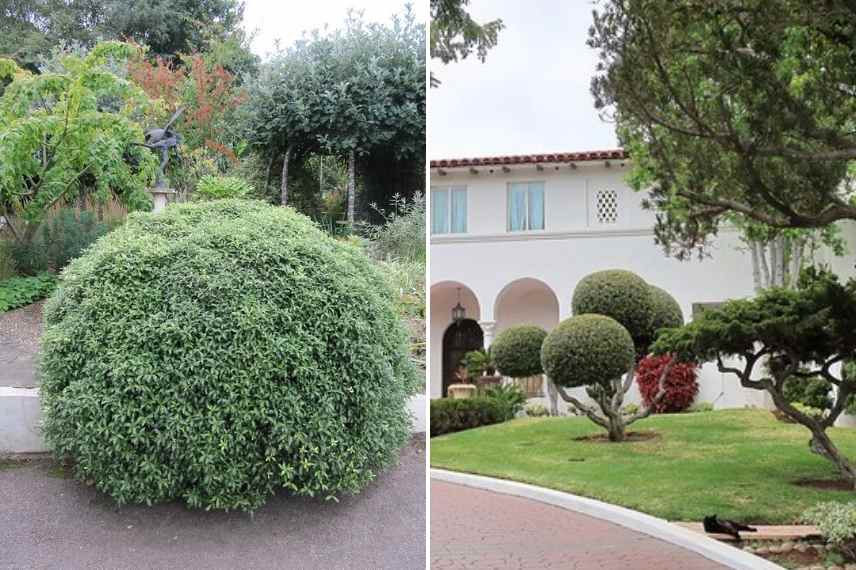
Pittosporum tenuifolium ‘Golf Ball’ on left (Photo: L. Enking) and topiary of Pittosporum crassifolium on right (Photo: KM)
In a rockery
For rockeries, favour varieties such as ‘Tom Thumb’, ‘Golf Ball’, ‘Silver Ball’, ‘Golden Ball’ and Pittosporum tobira ‘Nanum’, which form attractive little cushions.
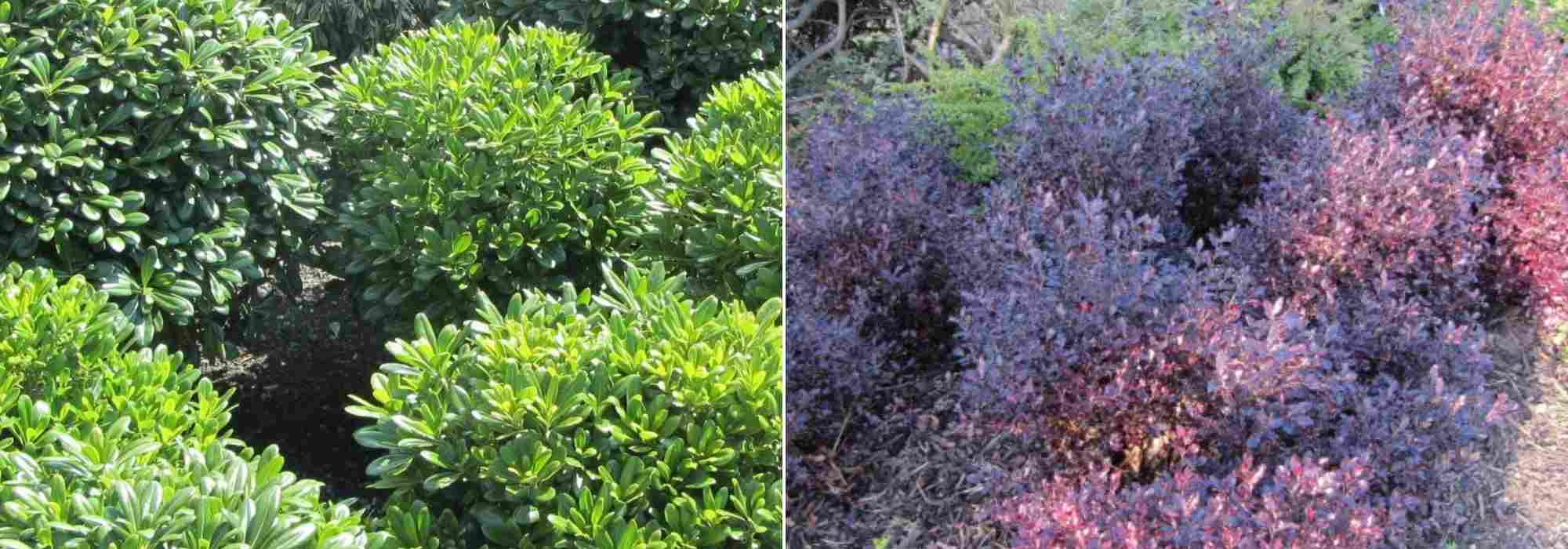
Little cushions of Pittosporums tobira ‘Nanum’ and Pittosporum tenuifolium ‘Tom Thumb’ (Photo: L. Enking)
⇒ For more inspiration, discover: 5 ideas for successful Pittosporum combinations.
Find out more
Also consult our complete guide: Pittosporum: how to plant, to grow and to prune
- Subscribe!
- Contents
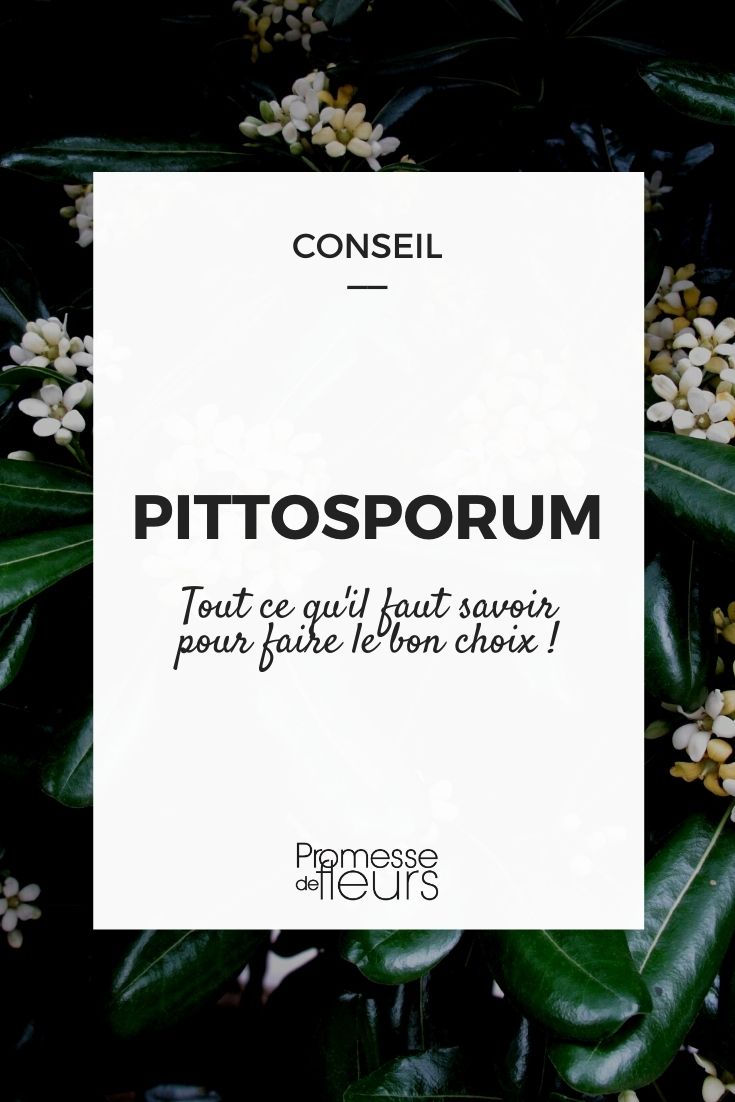































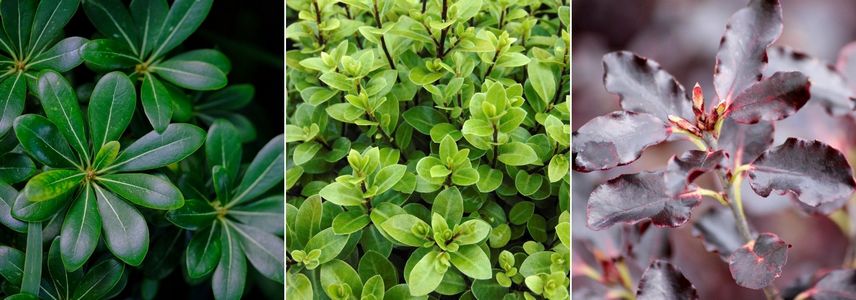
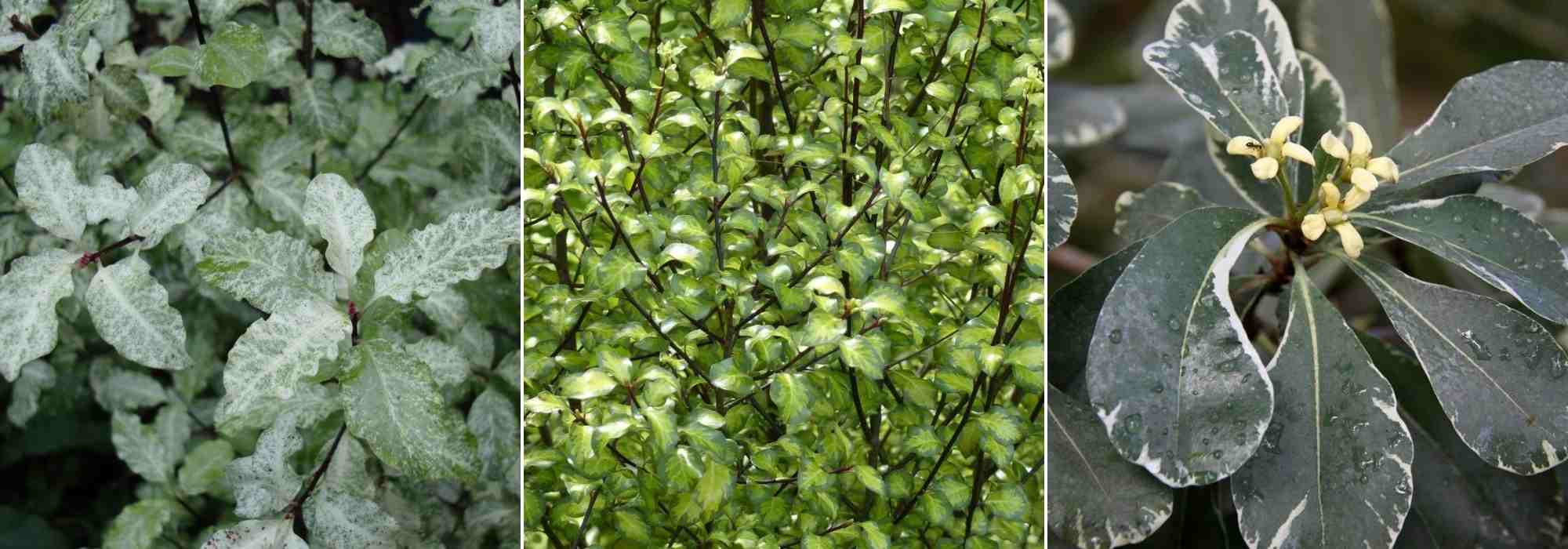
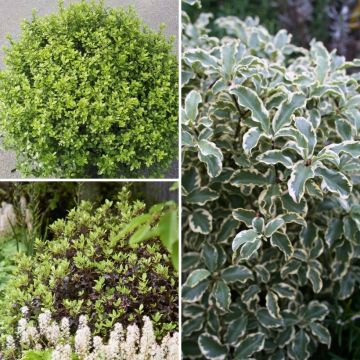
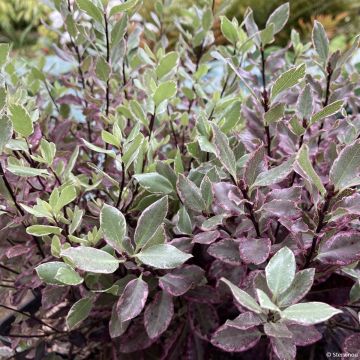
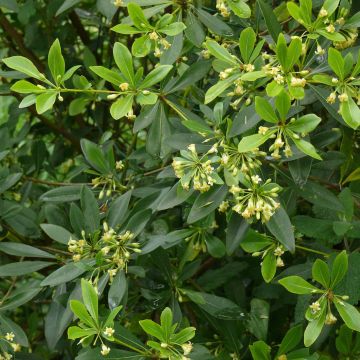
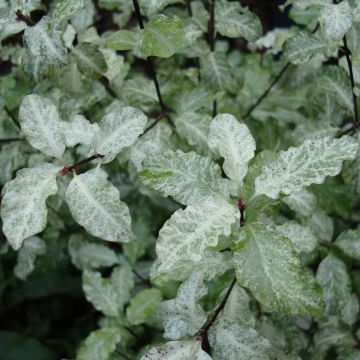
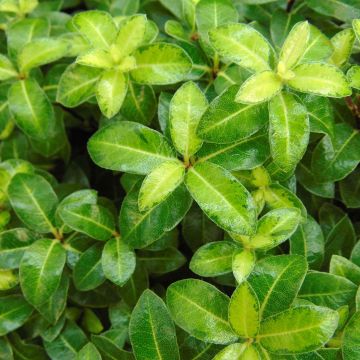
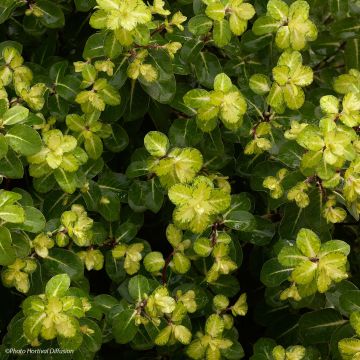
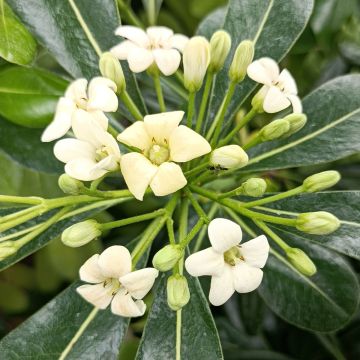
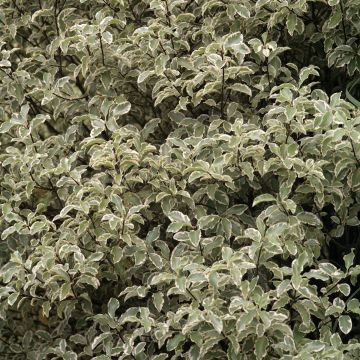
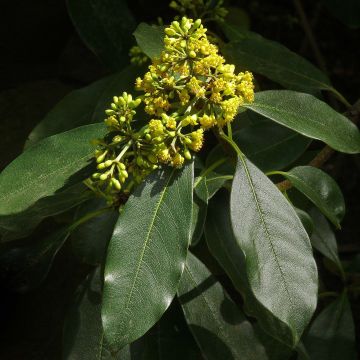
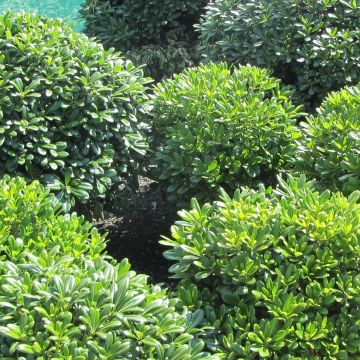
Comments